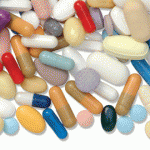The introduction of biologic disease-modifying anti-rheumatic drugs (DMARDs) has greatly expanded the treatment options for managing rheumatoid arthritis (RA). In many patients, biologic DMARDs improve clinical symptoms, improve function and slow disease progression. Biologic DMARDs are recommended as add-on treatment to conventional synthetic DMARDs, such as methotrexate (MTX) in patients who experienced an incomplete response to MTX. Despite the availability of numerous biologic DMARDs, many patients with RA do not achieve the treatment goal of disease remission or even low disease activity, normalization of function and inhibition of joint destruction. One reason why these responses are not achieved in most patients may be the complex pathophysiology of RA, which involves numerous proinflammatory cytokines and effector cells.
The multifaceted nature of RA presents opportunities for new therapeutic targets, including the inhibition of multiple pathways known to be involved in the pathogenesis of RA.
Objective: Tumor necrosis factor (TNF) and interleukin 17 (IL-17) independently contribute to the pathophysiology of RA. ABT-122 is a novel, dual variable domain immunoglobulin that selectively and simultaneously targets both TNF and IL-17A. The aim of treatment with ABT-122 is to evoke a greater clinical response than that achieved by targeting either cytokine alone. The aim of this study was to present the pooled safety, tolerability and exploratory pharmacodynamics of ABT-122 based on two phase 1, placebo-controlled, multiple-ascending dose studies in patients with primarily inactive RA.
Methods: Forty-four patients receiving stable dosages of methotrexate (2.5–25 mg/week) were randomized to receive subcutaneous placebo, ABT-122 1 mg/kg every other week (four doses) or ABT-122 0.5, 1.5 or 3 mg/kg weekly (eight doses) and were evaluated through 45 days after the last dose (Day 92). Serum samples for the assessment of inflammatory markers and chemokines were collected at baseline and on postdose Days 3, 5, 8, 15, 29, 57, 64, 78 and 92.
Results: No clinically significant findings regarding the safety of ABT-122 were observed. The rates of treatment-emergent adverse events (AEs) were similar in patients receiving ABT-122 and those receiving placebo. Only one serious AE (and no systemic hypersensitivity reactions or dose-limiting toxicities) was in patients treated with ABT-122, and no serious infection was reported. The levels of CXCL9, CXCL10, CCL23 and soluble E-selectin were significantly decreased following ABT-122 treatment relative to placebo treatment. Although patients had essentially inactive RA, exploratory clinical parameters suggested potential anti-inflammatory effects following treatment with ABT-122.
Conclusion: The results of these phase 1 studies suggest that dual neutralization of TNF and IL-17 with ABT-122 has a profile acceptable for further exploration of therapeutic potential in TNF and IL-17A–driven immune-mediated inflammatory diseases.
Excerpted and adapted from:
Fleischmann RM, Wagner F, Kivitz AJ, et al. Safety, tolerability, and pharmacodynamics of ABT-122, a tumor necrosis factor and interleukin 17–targeted dual variable domain immunoglobulin, in patients with rheumatoid arthritis. Arthritis Rheumatol. 2017 Dec;69(12):2283–2291.


